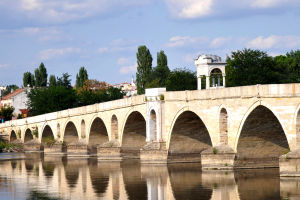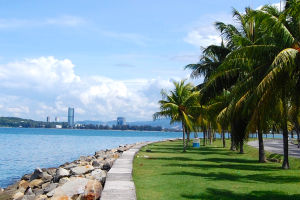Lykkers, are you ready to step back in time and walk through landscapes carved lovingly by hand over two thousand years ago? Hidden in the Cordillera mountains, Batad in Ifugao, Philippines, is a living tribute to the Ifugao people’s artistry—the famous amphitheater-style rice terraces.
With its isolation, waterfalls, and simple village life, Batad is both an adventure and a cultural immersion. Here’s your complete DIY guide to experiencing this world heritage destination.
How to Reach
From Manila, take an overnight bus to Banaue (around 9 hours, costing $12–15). From Banaue town, hire a tricycle or jeepney to Batad Saddle Point—the last road stop—for about $18–20 per ride. From here, it’s a 3 km hike into the village over uneven terrain. Porters are available for $8–12 if you’re carrying heavy bags. Wear proper trekking shoes, as muddy paths and stone steps are part of the Batad welcome.
Hike to Village
The walk into Batad already feels like you’re entering a different era—stone paths, mountain ridges, and terraces surrounding you in emerald green. The hike takes roughly 45–60 minutes, depending on your pace. Bring plenty of drinking water (about $1 per bottle if purchased locally) and be prepared for hot sun or sudden rain showers.
Batad Rice Terraces
The iconic Batad Rice Terraces, part of the UNESCO World Heritage-listed Rice Terraces of the Philippine Cordilleras, form a massive amphitheater carved into the mountains. These stone-walled paddies were crafted entirely by hand using age-old techniques passed down generations.
Entrance to the terraces is included in the environmental fee of $1–2 per person paid at the village. For the best viewpoint, hike 20–30 minutes upward to the Batad Terraces Peak, where you’ll get sweeping panoramic views—a photographer’s dream.
Meet the Locals
One of Batad’s true highlights is the warmth of its Ifugao community. With limited internet and electricity, this is the perfect opportunity to unplug and connect through real conversations. Hospitality is usually simple and generous.
Locals often sell handmade crafts such as woven bags ($5–10), wood carvings, Ifugao textiles, and locally grown coffee.
Farm Experiences
Depending on the season, you may join villagers in planting or harvesting rice by hand. There’s no fixed fee, but small contributions of $3–5 are appreciated. These cultural immersions allow travelers to see how Ifugaos harmonize life with nature. Children and elders alike work together, showcasing an admirable balance of hard work and joy.
Tappiya Falls
After exploring the terraces, venture further down to Tappiya Falls, a towering 70-meter cascade just 30 minutes from the village. Entry is generally free, though guides may request about $5–7 for assisting groups.
Swimming here is refreshing, but take extra care during the rainy season (June–August) when waters can be strong.
Where to Stay
Budget: Batad View Inn and Restaurant – Rooms from $11/night, with terrace views and home-cooked meals.
Mid-Range: Savta Homestay – From $20/night, includes Wi-Fi and hearty breakfasts with vegan options.
Luxury-style Stay: Baleh Boble Guesthouse – Rooms from $50/night, with landscaped gardens and barbecue facilities.
Remember, accommodations in Batad are rustic compared to city hotels—expect basic comfort, shared bathrooms in some areas, and cool mountain air at night.
Best Time to Visit
March–May: Dry season, terraces are at their greenest.
June–July: Harvest season; great to witness rice gathering rituals.
December–February: Cool and crisp weather, perfect for hikes.
Avoid August–September when typhoons may hit, making trails slippery and risky.
Travel Tips
Bring plenty of cash, as there are no ATMs in Batad.
Pack lightweight clothing, quick-dry hiking wear, and a rain jacket.
Mobile signal is weak; download offline maps and guide notes.
Porters and guides are optional but help immensely on steep sections. Tip generously—$3–5 per day for guides is appreciated.
Conclusion
Batad is more than just rice terraces—it’s an immersion into Ifugao heritage, nature, and humanity. The journey may be demanding, but the amphitheater-like terraces, refreshing falls, and warm conversations with locals make every step worthwhile. Lykkers, if you had the chance to spend one day in Batad, would you trek straight to Tappiya Falls for a refreshing dip, or linger with the villagers learning the art of rice farming?


